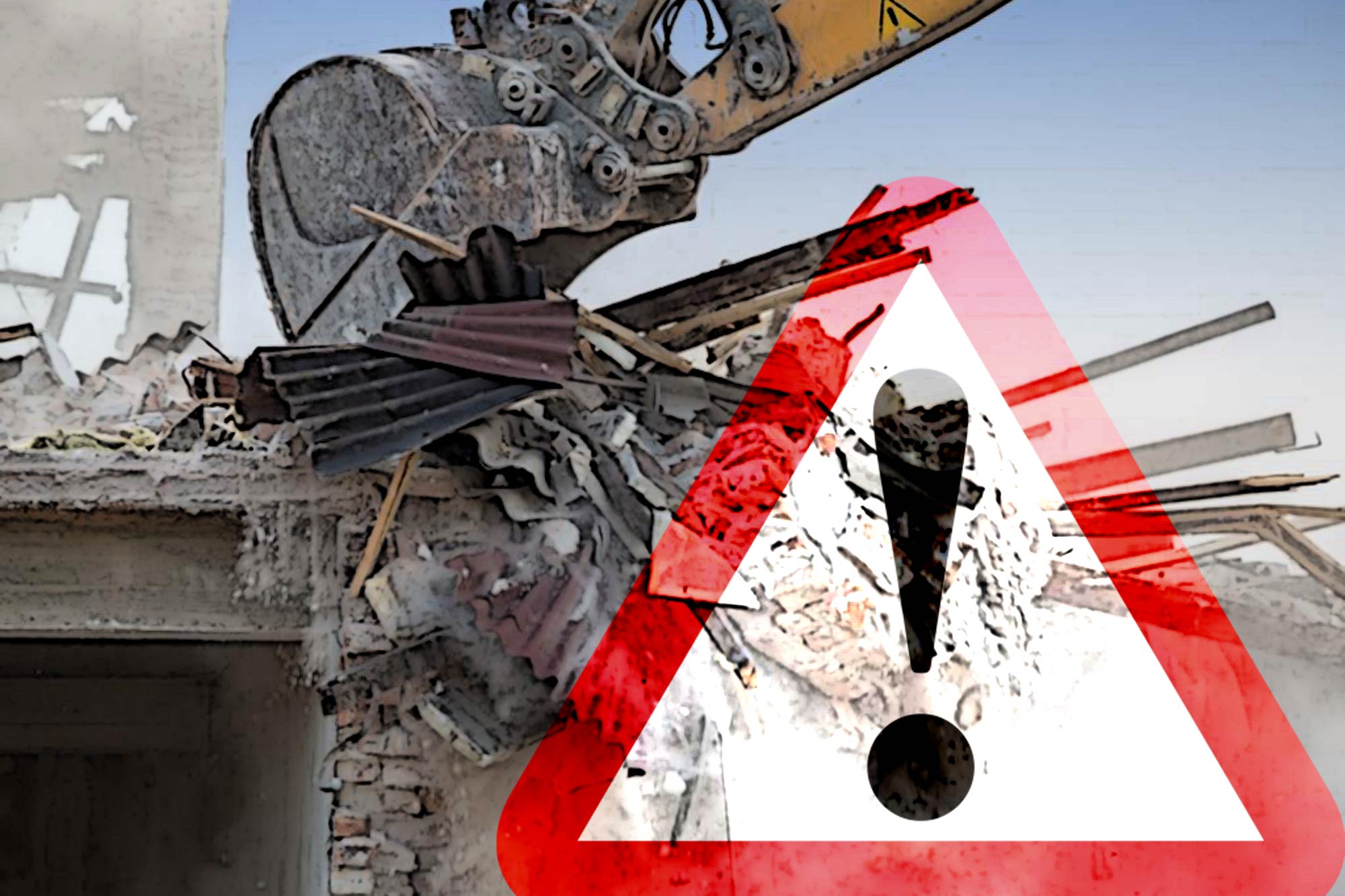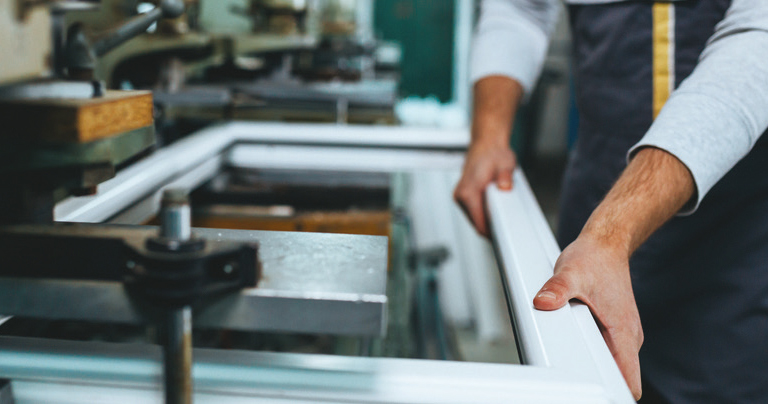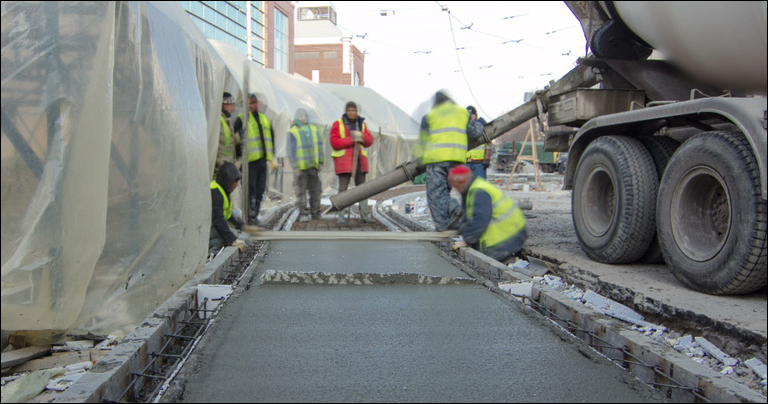Guard against demolition dangers
By Edit Team | July 17, 2018 8:46 am SHARE

Factors like natural calamities, changing functions, city reconstruction, or higher residence demand, lead to demolition or re-construction of existing structures
Every planned structure has a life period and if it survives more than its service period, it becomes dangerous for the occupants and other buildings surrounding it.
The life cycle of concrete structures is usually 40 to 90 years. During this period, structures often meet with situations like natural calamities, changing functions, city reconstruction, or higher residence demand due to population, all these lead to demolition or re-construction of existing structures.
Demolition is essential for the development of new structures, both for residential and industrial purposes. Today, various kinds of demolition methods are available, but the method of implementing varies with the site condition, safety and cost.
Dangers of building demolition
Causes and consequences
Demolition requires technology or engineering that is similar to the technology required for construction of a new structure. According to K Rajarama Rao, Chief General Manager – Materials, NCC Ltd, “If demolition activity is not done carefully it may result into severe consequences. The various causes of consequences of demolition of buildings are injury to human workers due to the difficulty of accessing into or working inside a building which is under demolition, falling of smaller objects or debris from the demolishing building, heavy machinery used in demolition may have risk of collapse due to insufficient support“.
Work-related hazards
Pankaj Kumar, Vice President, DOZCO India Pvt Ltd says, “Demolition can be exposed to numerous hazards that may cause serious accidents to demolition workers such as being buried by heavy building parts, falls from height or being hit by breaking wire ropes under excess loads. They can also be exposed to several causes and conditions that can trigger chronic diseases such as cancer by asbestos, silica dust, PCBs, dust and ultraviolet rays, MSD by working with heavy machines and carrying heavy loads.”
Companies have to manage the risks associated with demolition work and the first step of the responsible persons should be to identify the hazards. Some work-related hazards are as follows
• Dust raised by the demolition work.
• Noise and vibration caused by the machines, hand-tools, explosives, and falling or collapsing parts of the building.
• Coldness, heat, and ultraviolet rays from the sun, as a great deal of the work have to be done in the open.
• Using explosives may affect a wide area. There is the possibility of charges that have not gone off and the structure may not have collapsed the way it was planned and is left hanging in a dangerous state of instability.
Risk involved in demolition work
Uttkarsh Mehta, Partner, Edifice Engineering informs, “Unwanted fall of the structure, flying debris, sudden collapse of slab due to over weight of debris, methodology adapted for demolition such as placing of machine on the top of the building are the dangers of building demolition.”
Fatal and non-fatal occupational injuries
Many of the dangers of demolition and construction work are common but demolition work also has its own hazards. Material hidden within structural members like lead paint, silica, heavy metals, other chemicals, the presence of asbestos, a person can get cancer if he/she inhales asbestos particles in the air as the asbestos particles will settle in the lungs and areas with sharp edges or protruding spikes are examples of these hazards. Moreover, accidents caused by structural collapse due to unknown strengths or weakness of construction materials such as post tensioned concrete, and broken glass resulting from damage done to the building during demolition also happen frequently.
Pankaj Udeshi, Assistant General Manager Procurement, Supreme Infrastructure India Ltd says, “According to the research, demolition work in the construction industry is hazardous and is in the area where fatal and non-fatal occupational injuries occur the most. However, as it is usually not possible to eliminate 100 per cent of risk from this work but try to increase the level of safety to the great extent and minimise the loss in all sense.”
Achieving demolition safety
Checklist of demolition control process
Safety should always be the first thing considered in any project, whether demolition or construction. Demolition control process checklist is important in every demolition job. Udeshi informs, “Check in advance which is the best suitable method of demolition applicable out of all available methods of demolition, hiring of right contractors, follow all safety rules and regulations, environmental management planning and waste management planning must be done in advance, using of right personal protective equipment (like: eye, face head, hand and foot protection, respiratory, hearing and fire protection, personal fall arrest systems etc.) doing demolition work with trained and skilled employee to handle additional hazards due to unknown factors, advance planning of fire prevention and evacuation, keep ready first aid and emergency medical service.”
In the demolition sector, the use of machines has increased work efficiency and reduced the number of people needed to perform many tasks. However, this also creates another hazard, which is being ‘struck by’ workplace machinery. Due to the likelihood of human error, these hazards are named man machine interface. Udeshi says, “The power of new technology and innovation in technologies is to carry out heavy industrial demolition in a radically new way, the use of robotics subcontractors is to demolish the structure successfully, without putting people in danger. It not only reduces noise, dust and vibrations but also dramatically improves the rate of recycling disassembled materials (The relatively new term is deconstruction – to preserve valuable elements for re-use).”
Importance of systematic approaches
Kumar states, “A systematic approach is necessary from the very beginning to achieve demolition safety in a project. This includes assign clear responsibilities and appoint a health and safety co-ordinator, plan the method and necessary training and instruction sessions, collect plans and reports of the structure to be demolished (e.g. stability, connections, where has asbestos been used), conduct surveys to fully evaluate the project, organise worker involvement. ”Measures to be considered in demolition, dismantling and excavation work are structure stability, hand tools and equipment, big machines, explosives, excavating.”
Mechanising demolition
Mehta suggests, “Demolition using machine and less of manpower improves safety, proper testing of equipment for their functions before start of work, analysing structural stability during demolition, deploying adequate capacity equipment’s to do the job are the steps to be consider to achieve demolition safety.”
Various technique of demolition
Demolition equipment should be appropriate for the purpose. Rao says, “Powerful, highly destructive equipment can be used when the entire structure is to be demolished. However, for partial demolition the use of impact equipment should be carefully controlled as this can cause unacceptable damage to the preserved portions of the structure. Buildings and structures should generally be demolished in reverse order to their construction, that is, top down method is the technique that proceeds from roof to ground by sequential demolition.”
The different methods of demolition are as follows
• Demolition of building by top down- manual method
Manual methods are carried out top down, proceeding, in general, from the roof to ground. The particular sequence of demolition may vary, depending on site conditions and structural elements to be demolished. Cantilevered structures, balconies and canopies may project out of the building are the first set to be dismantled. Reinforced concrete floor slab shall be demolished by gradually breaking away the concrete. The reinforcement shall remain and be cut off after the concrete is broken away.
• Demolition of building by top down- by machines
The sequence of demolition by machine is typically the same as the top down manual method, except that most of the demolition is done by mechanical plant like machines fitted with demolition hammers, pneumatic cutters and excavators. The demolition begins with the lifting of the mechanical plant on to the building top floor. The concrete shall be broken away first before the cutting of reinforcement. Alternatively, the reinforced concrete slab may be cut by saw cutting.
• Demolition of building by wrecking ball
The wrecking ball application consists of a crane equipped with a steel ball. The destruction of the building is by the impact energy of the steel ball suspended from the crawler crane. The wrecking ball operates outside the building. This method is suitable for dilapidated buildings, silos and other industrial facilities. However, the operation requires substantial clear space. The application also demands high-level skill operators. Recommended techniques for the wrecking ball operations include vertical drop i.e. free falling of the wrecking ball onto the structure and swing in line i.e. swinging of the ball in-line with the jib.
Safest demolition equipment
Rock breaker and pulveriser
Kumar from DOZCO says, “We have emerged as manufacturer from 2013, by manufacturing under carriage for crawler equipment, demolition attachment and spares, being rich in experience and knowledge. ”DOZCO manufacture high quality demolition equipment and attachments for demolition such as rock breaker, mini excavator and pulveriser.
Rock breaker
DOZCO’s advanced series of hydraulic rock breaker is designed to demolish rock, concrete and intact construction materials, trenching and breaking asphalt, concrete, huge stones etc. Hydraulic breakers can be a best friend on a jobsite where demolition is the end goal. Breakers that can be mounted to a mobile carrier range in size from those that can be paired with a carrier weight class ranging from 1-100 tonnes, for excavator, backhoe, skid steer loader, etc.
Pulveriser
Pulveriser sare the most versatile tools for demolition and recycling operations. Different types of pulveriser are primary pulveriser, secondary pulveriser, and multi-processor pulveriser. Interchangeable jaws deliver outstanding productivity in variety of applications. The structure is exclusively made of steel with the best anti-wear capacity and high quality material such as special wear resistance steel. The hydraulic pulveriser can be used to demolish concrete floors or low walls. It will provide the benefits like; low noise and vibration, good fragmentation, good separation of steel wire from the concrete material, re-utilisation of crushed concrete as aggregate material, recycled steel can be sold to the steel mill industry.
High reach demolition excavators
Mehta from Edifice says, “High-reach demolition excavators attached with concrete crackers, steel shears and demolition robots are the safest demolition equipment available.”
Powerful, highly destructive equipment can be used when the entire structure is to be demolished.
K Rajarama Rao, Chief General Manager – Materials, NCC Ltd
A systematic approach is necessary from the very beginning to achieve demolition safety in a project.
Pankaj Kumar, Vice President, DOZCO India Pvt Ltd
High-reach demolition excavators attached with concrete crackers, steel shears and demolition robots are the safest demolition equipment available.
Uttkarsh Mehta, Partner, Edifice Engineering
Demolition work in the construction industry is hazardous and is in the area where fatal and non-fatal occupational injuries occur the most.
Pankaj Udeshi, Asst. General Manager Procurement, Supreme Infrastructure India Ltd
Cookie Consent
We use cookies to personalize your experience. By continuing to visit this website you agree to our Terms & Conditions, Privacy Policy and Cookie Policy.




















































